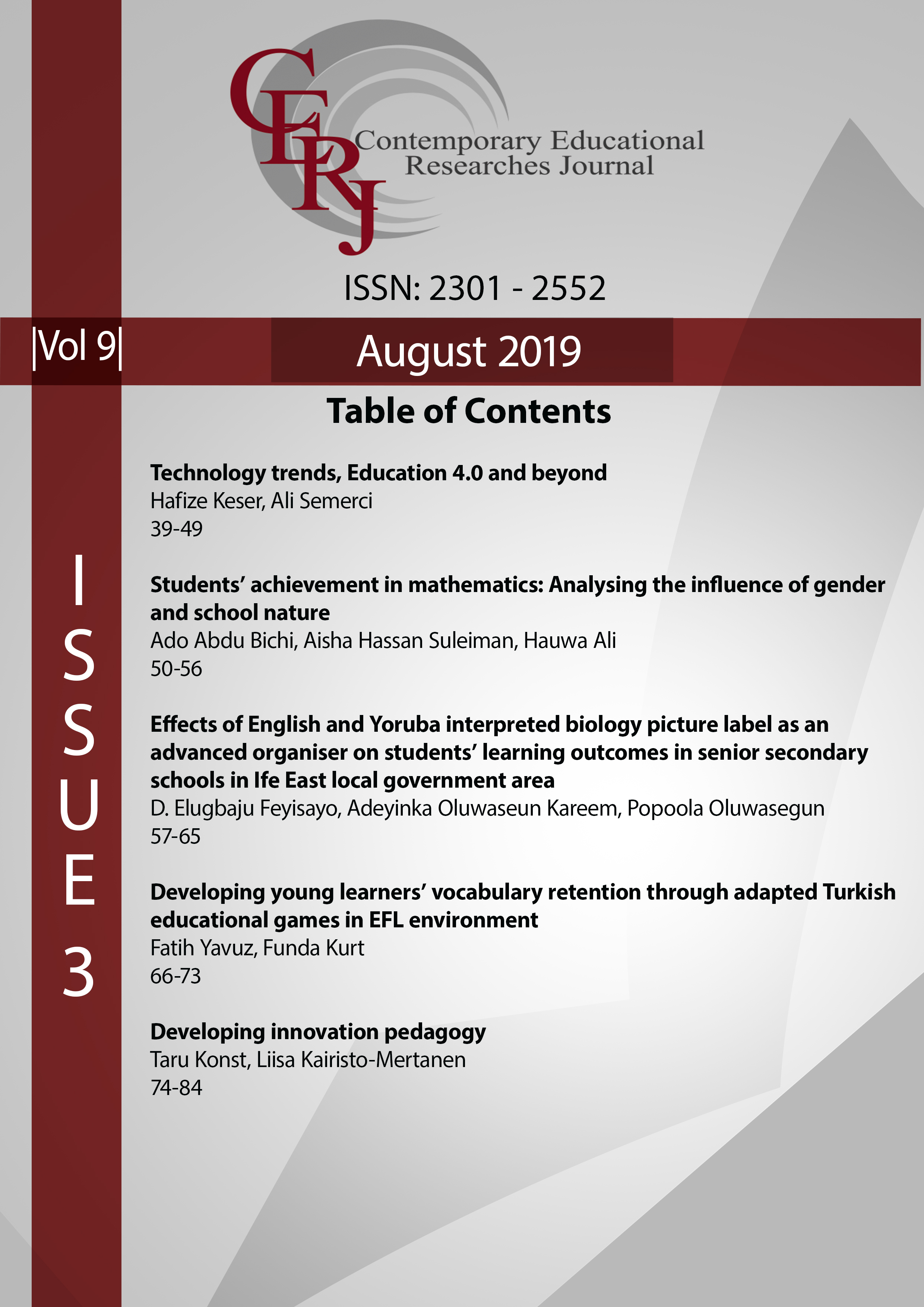Students' achievement in mathematics: Analysing the influence of gender and school nature
Main Article Content
Abstract
This study examined students’ achievement in senior secondary school mathematics qualifying examination in Kano State, the influence of sex and schools nature on their achievement in mathematics has been assessed. Ex-post facto research design was adopted for the study. A pro forma was used to collect data from a sample of 300 students, selected using stratified random sampling procedure from the science secondary schools in Kano state Nigeria. The data collected were the students’ performances in mathematics achievement test. The data were analysed using descriptive statistics and independent sample t-test to test the hypotheses at 0.05, level of significance. Overall results showed that students performed below average and a significant gender difference exists in mathematics performance. Similarly, a significant difference was also observed with respect to schools nature (boarding and day schools); day school students performed above better than boarding school students. The implication of this finding is that despite government continuous efforts, the academic achievement of students in mathematics through above hypothetical pass mark fell below the required average mark for admission into Nigerian universities. It was recommended among others that teachers should regularly motivate students to develop a good study habit and test them on the various mathematics concepts and feedback provided should be used to prepare them for credible achievement in mathematics at both internal and external examinations.
Keywords: Gender; mathematics; school nature; students’ performance
Downloads
Article Details

This work is licensed under a Creative Commons Attribution 4.0 International License.
Authors who publish with this journal agree to the following terms:
- Authors retain copyright and grant the journal right of first publication with the work simultaneously licensed under a Creative Commons Attribution License that allows others to share the work with an acknowledgement of the work's authorship and initial publication in this journal.
- Authors are able to enter into separate, additional contractual arrangements for the non-exclusive distribution of the journal's published version of the work (e.g., post it to an institutional repository or publish it in a book), with an acknowledgement of its initial publication in this journal.
- Authors are permitted and encouraged to post their work online (e.g., in institutional repositories or on their website) prior to and during the submission process, as it can lead to productive exchanges, as well as earlier and greater citation of published work (See The Effect of Open Access).
